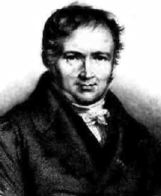

Originally forced to study medicine, Siméon Poisson began to study mathematics in 1798 at the Ecole Polytechnique. His teachers Laplace and Lagrange
were to become friends for life. A memoir on finite differences, written when Poisson was 18, attracted the attention of Legendre.
Poisson taught at Ecole Polytechnique from 1802 until 1808 when he became an astronomer at Bureau des Longitudes. In 1809 he was appointed to the chair
of pure mathematics in the newly opened Faculté des Sciences.
His most important works were a series of papers on definite integrals and his advances in Fourier series. This work was the foundation of later work in this
area by Dirichlet and Riemann.
In Recherchés sur la probabilité des jugements, an important work on probability published in 1837, the Poisson distribution first appeared. The Poisson
distribution describes the probability that a random event will occur in a time or space interval under the conditions that the probability of the event occurring is
very small, but the number of trials is very large so that the event actually occurs a few times.
He published between 300 and 400 mathematical works including applications to electricity and magnetism, and astronomy. His Traité de mécanique
published in 1811 and again in 1833 was the standard work on mechanics for many years.
His name is attached to a wide area of ideas, for example: Poisson's integral, Poisson's equation in potential theory, Poisson brackets in differential equations,
Poisson's ratio in elasticity, and Poisson's constant in electricity.